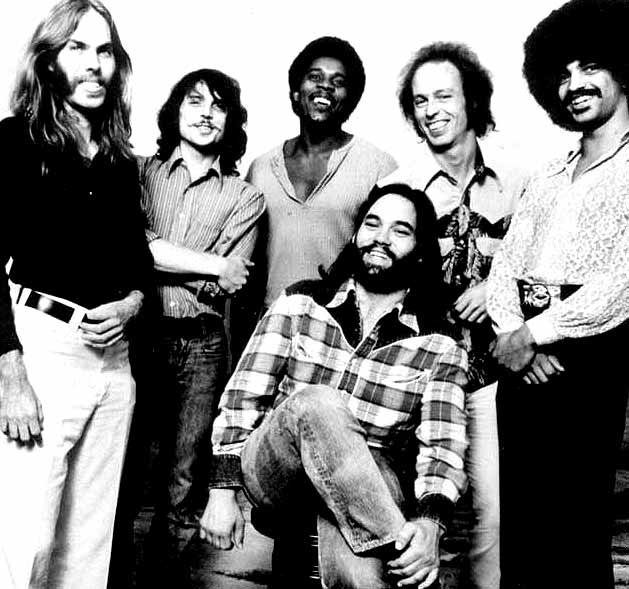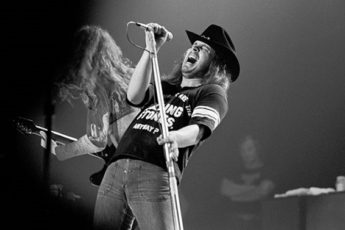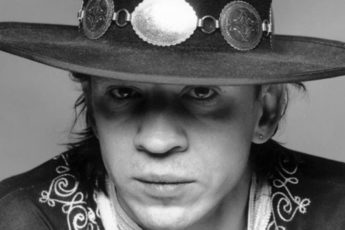
What band and album was the most played in your freshman college dorm? Kind of a defining characteristic of the times, right? I arrived at Tulane University in the fall of 1979, and moved into the fourth floor of Sharp Hall, where people were trying to establish their identity, at least in part, by what music came wafting out of their rooms. At one end of the hall, the soon-to-be WTUL college radio D.J. played a ton of Talking Heads; Next to him, The Ramones were highly favored by future “Eight Men Out” actor D.B. Sweeney; Frog Albrecht and Hulk Harris leaned toward some stony selections (though Frog bore an uncanny resemblance to a young George Thorogood); Clean-cut Todd Ebitz blasted out raucous Molly Hatchet; The hopelessly inept Nacho tried to appear cool by playing the Rolling Stones Black And Blue album non-stop (it didn’t work); My roommate Froydee consistently chose Supertramp and Bad Company, a seemingly odd match; And this being New Orleans, there was the occasional presence of some bebop jazz, brought forth by some especially hard-striving hipsters.
Yet one record definitely stands atop the list in my memory, the one you’d be most likely to hear almost any time you walked through the dorm, but especially coming out the windows on a Friday afternoon, and that was the live album Waiting For Columbus by Little Feat. I feel like the concert emcee’s 4-letter introduction of “Let’s hear it: F…E…A…T” (followed by opening track ‘Fat Man in the Bathtub’) was as much a pronouncement of the weekend’s arrival as T.G.I.F. It was ubiquitous. I’m not sure I can explain why – the band wasn’t exactly cutting edge or cool at that time – but it is undeniably a spectacular album. In retrospect, perhaps the death of bandleader Lowell George in late June of ’79 provided a surge in mindfulness for an album that had been released a year-and-a-half earlier. Personally, I didn’t know anything then about George’s demise from overdosing on either cocaine or pizza,* and I wasn’t even really all that familiar with the band. I mostly learned of Little Feat from this album, whose live versions of their catalog of old songs became the established, recognizable ones, I’d say, for most listeners – as was the case with Peter Frampton on Frampton Comes Alive or Cheap Trick with At Budokan.
*According to frequent Feat collaborator and future band member Fred Tackett, “We were driving down the New Jersey Turnpike in our bus and we stopped at this pizza joint off the highway. Everybody in the band shared a cheese pizza but Lowell bought a large pizza with everything on it, carried it to the back of the bus, and he ate the entire pizza by himself. He died two or three days later. So, when people ask me, ‘What really killed Lowell?’ I say, ‘It was a pizza on the New Jersey Turnpike’.”
You can drop the proverbial needle any place in this double album collection and find some really unique, melodic, syncopated grooves, some fantastic and essential tunes, and without question some inspired jams. I’ll pick one of Little Feat’s signature songs, ‘Dixie Chicken’, originally released as the lead track on their 1973 album of the same name, but here treated to extended solos on piano by keyboardist Billy Payne, a dual jam by George and fellow guitarist Paul Barrere, and in between, an unexpected and phenomenal Dixieland-style breakdown contributed by the famed Tower Of Power horn section. Ah! Maybe that explains it’s vast popularity in New Orleans (nah).
And hey, excuse the length but I couldn’t help but also include the track that immediately follows, ‘Tripe Face Boogie,’ a seamless segue on the album. Man, this tune has got it all…including, apparently, one of the grossest images ever presented in a song title. Tripe, for those who aren’t aware, is a cow’s stomach lining; tripe face, then, is just plain nasty, even while boogieing.






daniel robinson
July 13, 2018 11:00 amGreat album and band
David Dweck
November 20, 2018 12:21 amGood stuff Billy. This is a desert island disc for me fo sho! The musicianship, sonic quality, TOP Horns, just continues to inspire me. Only 1 complaint: The fade out on Spanish Moon!
Bill G.
November 20, 2018 12:38 amThanks, Dweck. Guess that Spanish Moon fade is a small price to pay for 78 minutes of incredible music.
Not sure if that should count as 2 desert island discs…